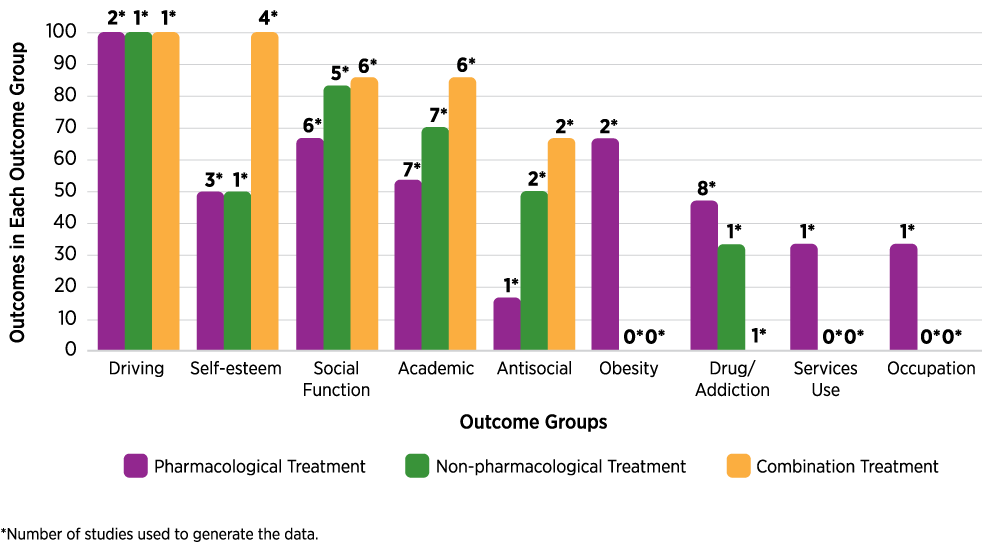Presentation / Course Longitudinal course of ADHD Longitudinal course of ADHD
Hyperactivity tends to decrease with age41,42
Inattention symptoms tend to increase with age41,42
Trajectories of hyperactivity and inattention in early childhood are significantly associated with each other; higher measures on one predict higher measures on the other41
Large prospective studies have followed children with ADHD and healthy controls into adolescence and adulthood; however, assessment and diagnostic (e.g., earlier and later DSM criteria) metrics have not been consistent41
Functional adult outcomes vary, including impact on educational attainment, job performance, income, marriage and family relationships, and social interactions41
Adapted from Faraone SV, et al. Attention-deficit/hyperactivity disorder. Nature Reviews. Disease Primer. 2015;1:Article number 15020
Early life/preschool age41,42
Most ADHD preschoolers present with the combined presentation
Hyperactive-impulsive more common; inattentive presentation is rare and more likely in girls
Hard to diagnose at this stage because some manifestations are also part of normal developmental stages
Comorbid conditions such as oppositional defiant disorder (ODD), communication disorders, and anxiety disorders are common and cause greater impairment
Preschool ADHD persists into school age in 60-80% of children
School age41,42
Most ADHD diagnoses made at this stage
Academic achievement, family interactions, and peer relationships are impaired
Higher rates of psychiatric comorbidity; the most common comorbidities are ODD, anxiety disorders, and learning disorders
~70% have ≥1 comorbid disorder
Adolescence/Adulthood41,42
Roughly two-thirds of children with ADHD continue to have symptoms of ADHD into adulthood
ADHD as a syndrome persists in ~15% by age 25; impairing symptoms persist in ~65%
Inattention symptoms are more persistent and decline more slowly with age than symptoms of hyperactivity and impulsivity
The majority of long-term outcomes of ADHD improve with all treatment modalities43
In the figure, each bar represents the % of outcomes reported to exhibit benefit (either significantly improved from untreated baseline or significantly improved compared with a group of untreated individuals with ADHD) with each treatment modality43

